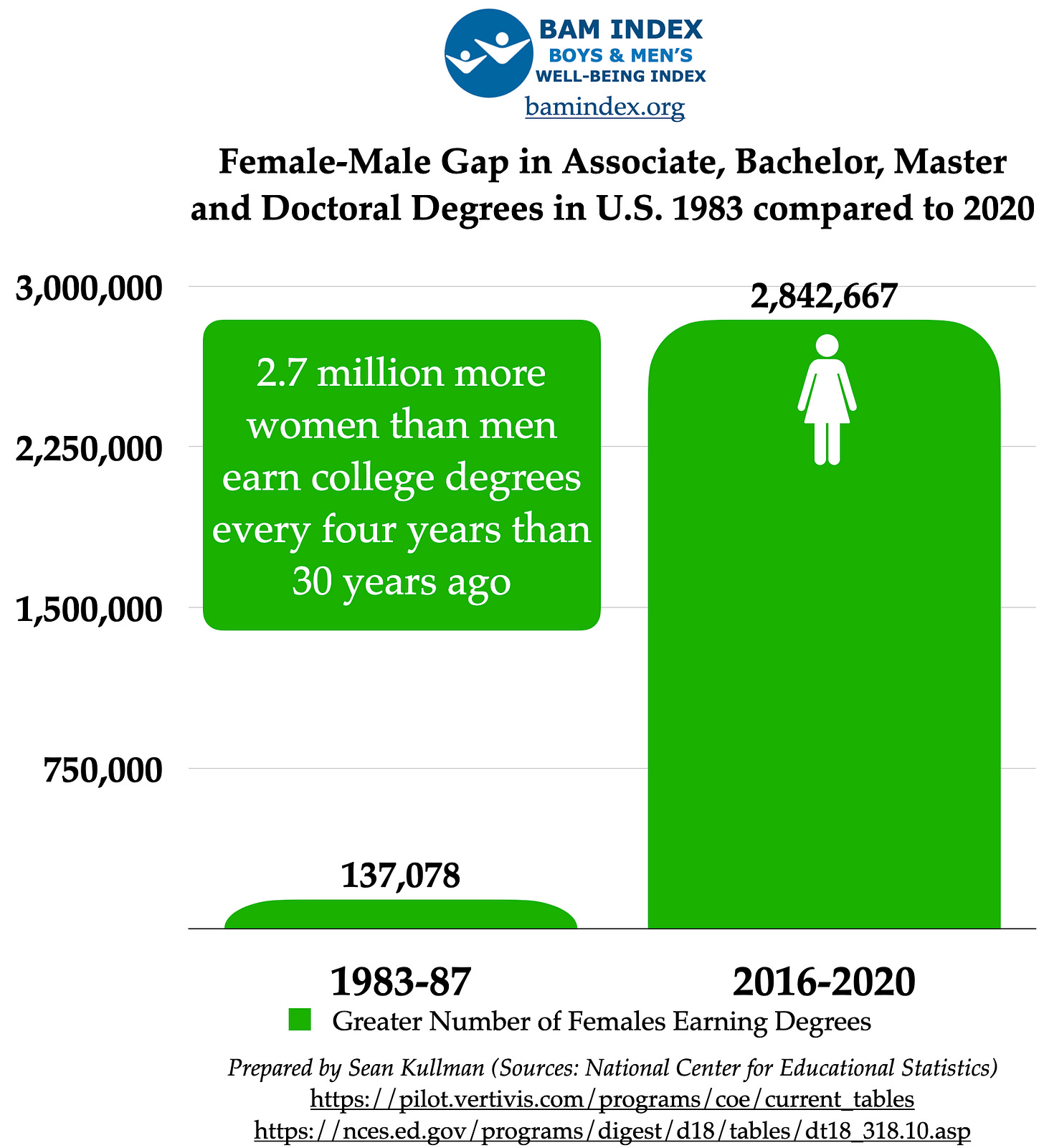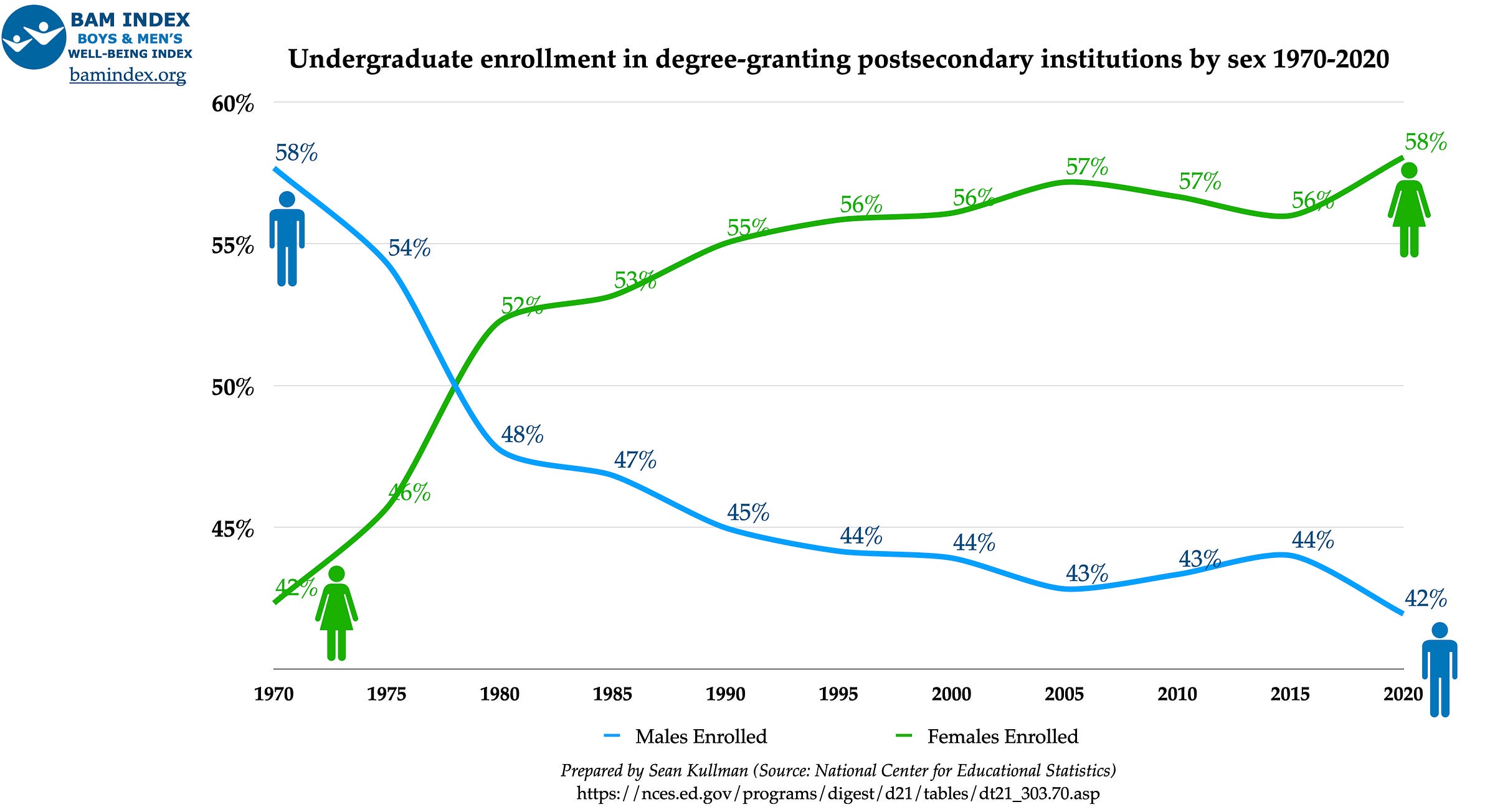- Accueil
- Title IX conséquence 1
Une preuve de plus que le féministe ne s'est pas s'adapter ne fait pas du neutre il ne fait que féminiser de la discrimination positive un discours misandre demande des financements et des actions spécifique au genre féminin qui serait le genre neutre :
https://gibm.substack.com/
The educational landscape in higher education dramatically changed after Title IX was signed into law on June 23, 1972. And it was not merely the law that transformed the educational outcomes 50 years later.
Women and girls’ success has been greatly augmented by private and public investment in their outcomes, from women only scholarships to federal, state, educational, and business entities working on their behalf alongside policy makers.
Women’s groups, for the most part, blamed institutions for sexism and have spent decades rightly discouraging that behavior. Together, men and women worked to identify institutions as the problem and not women. There is certainly merit in the argument. But can the same be said today? Even though that rationale still takes hold in today’s narrative, it’s fairly difficult to suggest sexism is at work in higher education against females when male outcomes are showing an ever-widening gender gap.
Males are significantly behind in higher-education outcomes than women were 50 years ago. The deficit for males today is significantly greater and has been for some time. From 1983-1987, there were 137,000 more female graduates than male graduates. From 2016-2020, that number increased to 2.8 million more female graduates.


There is no denying that the rapid transformation of college enrollment and outcomes is unprecedented, and it makes sense for some to argue it is a new form of sexism, as the women’s rights movement did decades ago. But the problem is much more complicated. Special interest groups, policy makers, educators, and others have made their careers on the topic, and I can’t help but think some are so entrenched in their own efforts that they forget to come up for air and look, not simply at the other side, but at the humanity of it all. These are not meant to be zero-sum games.
Part of the problem is many legislators, journalists, researchers, and others are unaware of the problem or selectively shy away from the topic for fear of reprisal. Some simply don’t care, but I don’t believe that represents the majority.
There are bold policymakers, like representative Mary Dye of Washington State, who are looking at the facts on the ground and gaining bi-partisan support from strong representatives deeply concerned about the outcomes of boys and men without compromising outcomes for girls and women.